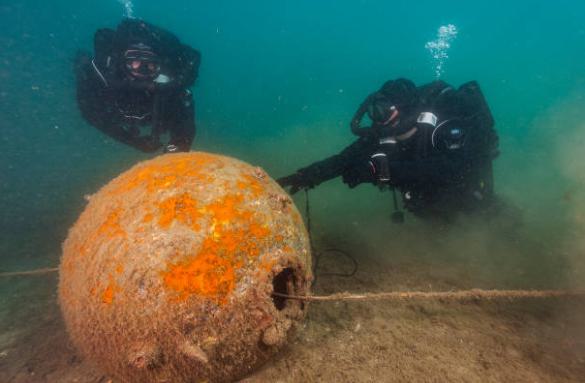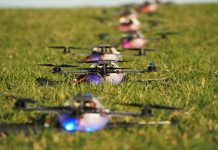
About an hour’s drive from Lisbon, Portugal, on a clear, sunny late-September day, a large robot resembling a penguin surfaced briefly above the water. It moved around a Portuguese Navy vessel at a distance, mostly hidden by the deep blue Atlantic.
This is the Greyshark, an autonomous underwater vehicle developed by Germany’s EuroAtlas. Measuring 6.5 meters long and weighing as much as a delivery van, it was among several naval drones the German Navy brought to Sesimbra, Portugal, to participate in NATO’s Dynamic Messenger and REPMUS exercises.
The exercises, which ran for three weeks in local waters, involved over 200 unmanned systems. A significant focus was on mine countermeasures and safeguarding critical underwater infrastructure. European navies are increasingly turning to autonomous systems and forward-deployed sensors to reduce human divers’ exposure to dangerous tasks. Various types of naval drones were employed to refine mine-hunting procedures, a complex operation requiring multiple robotic systems to operate in coordination.
“Command and control is far more intricate now, as integrating more robotic systems demands greater coordination, more personnel, and careful orchestration of numerous small tasks,” said Cmdr. Andreas Montag, head of the German Navy’s 3rd Minesweeping Squadron for maritime unmanned systems.
During REPMUS, the Greyshark, equipped with four high-resolution sonars, LIDAR scanners, electromagnetic sensors, and dual camera systems, was tested in submarine detection and decoy mine searches. Officials noted its operational range extends up to 8,000 nautical miles, roughly the distance from Sesimbra to New York and back.
The German Navy also showcased two other drones from EvoLogics: the Sonobot, an unmanned surface vessel, and the Quadroin AUV. The Sonobot acted as a “surface gateway,” providing underwater positioning and data connectivity, including Wi-Fi and GPS, to other autonomous systems. It is also employed by the Ukrainian military for surveying water bodies and identifying hazards.
The Quadroin, an underwater counterpart to the Sonobot, was deployed in swarms of up to six units for mine detection missions. “For the first time this year, we not only detected mines but also identified and captured video of each one during a single mission. The Quadroins divided tasks: some conducted sweeping searches, while others approached targets directly to record images,” said Rui Madeira, commander of the Portuguese Navy divers, during a demonstration on September 23.
From Manual to Autonomous
Exercises increased in complexity each week. Diver teams initially had prior knowledge of their mission areas, but later were informed only shortly before deployment and had to complete objectives under strict time constraints.
The French Navy deployed the A9-M AUV, made by Exail, in mine-warfare exercises. It first surveyed the seabed, with sonar data analyzed onshore; potential mines were then confirmed by divers or remotely operated vehicles.
According to a French EOD officer, the next step for unmanned mine-warfare technology is integrating artificial intelligence. “AI would allow drones to classify threats autonomously. At present, humans still analyze sonar data onshore after collection,” the officer, who requested anonymity, told Defense News.
Despite rapid technological advances, challenges remain. The British Navy, using HII’s REMUS 100 AUV for collaborative operations with the U.S. and Dutch Navies, encountered overheating issues due to unusually high temperatures. Solutions included cooling the vehicle with blankets and early deployment.
Other incidents occurred during the exercises: two German Sonobots collided, and a Portuguese fishing boat accidentally struck the French A9-M drone, forcing its removal from the demonstration.




